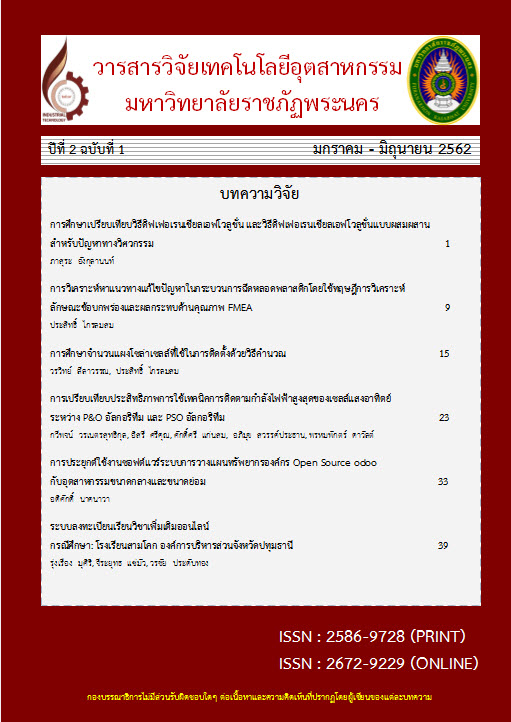A Comparison of the efficiency of solar cell power tracking techniques between P&O and PSO Algorithms
Keywords:
P&O algorithm, PSO algorithm, Maximum power trackingAbstract
This paper is a comparison of the efficiency of the solar cell power tracking technique between P&O algorithms and PSO algorithms by experimenting with 3 solar panels in series. The maximum power output is 450 watts via the synchronous buck-boost circuit. Converter Used to track the power of solar cells To load a 600 watt resistor in the experiment will use all 2 algorithms, namely P&O algorithm with PSO algorithm and find the efficiency of the two algorithms The results showed that the PSO algorithm can track the power faster than the P&O model. The energy swing rate is less than that and in the case of partial shadows More efficiency than P&O by 17 percent. PSO overall algorithm is more powerful than P&O. The algorithm, however, is more complicated than P&O. But the peak approach has a greater swing rate than the P&O algorithm
References
2. Poshtkouhi, S., Biswas, A., Trescases, O., 2012, “DC-DC Converter for High Granularity, Sub-String MPPT in Photovoltaic Applications Using a Virtual-Parallel Connection,” IEEE, pp.86-92.
3. Barchowsky, A., Parvin, J.P., Reed, G.F., 2011, “A Comparative Study of MPPT Methods for Distributed Photovoltaic Generation,” IEEE, pp.1-7.
4. Ishaque, K., Salam, Z., Amjad, M. and Mekhilef, S., 2012, “An Improved Particle Swarm Optimization (PSO)–Based MPPT for PV with Reduced Steady-State Oscillation,” IEEE Trans. Power Electronics, vol.27, no.8, pp. 3627-3638.
5. Abdulazeez, M., Iskender, I., 2011, “SIMULATION AND EXPERIMENTAL STUDY OF SHADING EFFECT ON SERIES AND PARALLEL CONNECTED PHOTOVOLTAIC PV MODULES,” ELECO, pp.I-28 – I-32
6. Ren, X., Ruan, X., Qian, H., Li, M. and Chen, O., 2008, “Dual-edge modulated four-switch Buck-Boost converter,” IEEE, pp. 3635-3641.
7. Eberhart, R. and Kennedy, J., 1995, “A new optimizer using particle swarm theory,” in Proc. 6th Int. Symp. Micro Mach. Human Sci., pp. 39–43.



